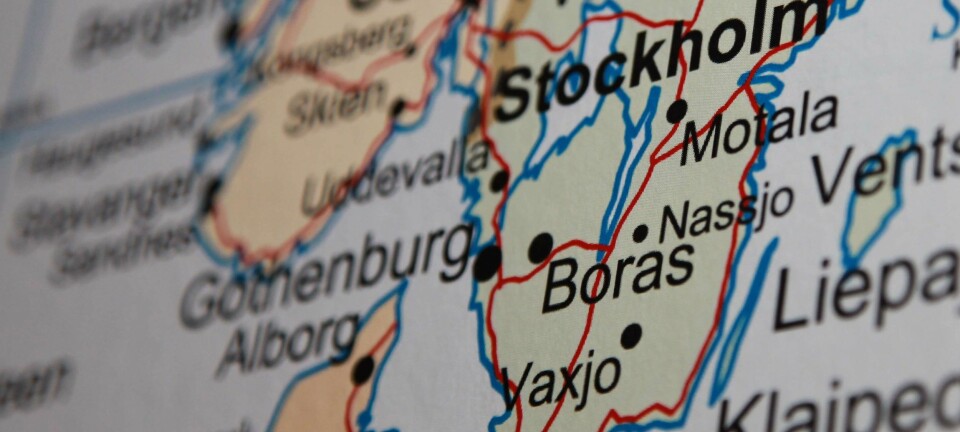
Is Danish welfare facing a break-up?
OPINION: Denmark is now discussing a break with the philosophy of universalism, although social expenditure in the Nordic countries is no higher than in Germany or France. Social policy experience tells us that universal welfare schemes are the most redistributive and that welfare for the poor always ends up as ‘poor welfare’.
It’s not the welfare state that has caused the economic crisis – it’s actually quite innocuous.
But the welfare state will inevitably be affected at a time when Denmark’s GDP falls by more than 6.5 percent, and when the indications are that the country faces seven years of zero growth.
Avoiding systemic errors
Denmark has experienced economic crises before. It is reasonable to say that in the 1980s, the welfare state was a part of the problem. But that crisis was resolved without lasting damage to the welfare state – systemic errors were avoided.
At the same time, resolving the economic problems included trimming the welfare state. However, the policies under Poul Schlüter (Conservatives, Prime Minister 1982-1993) and Poul Nyrup Rasmussen (Social Democrat, Prime Minister 1993-2001) resulted in a consolidation and in an improved version of the Nordic social model.
But looking at the current political utterances, there may be reasons to be less optimistic about the future of the welfare state.
The welfare state is not a part of the problem behind the crisis, and the increasing uncertainty about its social schemes is detrimental to the economy. In spite of this, a possible break with the Nordic universal model is being discussed openly.
Not the 1980s crisis
As regards the economy, there is a troubling tendency in the public debate to draw parallels between the current crisis and that of the 1980s (which is a little reminiscent of the current crisis in southern Europe).
Few, if any, leading politicians probably believe that the present crisis resembles that of the 1980s, but the rhetoric is politically tempting – and we’ve seen before that politicians get caught up in their own rhetoric to some extent.
Today’s crisis is the reverse of the crisis in the 1980s, however.
Back then, both the private and the public sector were plagued by over-consumption, and Denmark’s national debt and foreign debt were both about to get out of hand. It was necessary to cut private as well as public consumption.
Contrasting the 1980s with today
In the 1980s, Denmark had a record balance of payments deficit. By 2011, this had turned into the largest balance of payments surplus in the country’s history.
In the 1980s, Denmark had a galloping foreign debt. Today, the country has speedily growing net assets of about 450 billion DKK (€60.4 billion) in foreign countries – to some extent fulfilling the prophecy of a previous minister of finance who was ridiculed for saying that Denmark will end up ‘buying the whole world’.
In the 1980s, Denmark also had a large public debt; today, the net public debt is close to zero. In addition, the state has unrecorded assets amounting to some €134-175 billion in pension funds – in the form of deferred taxes that will be paid when the pensions are paid out.
The state’s credit rating is also good – so good that the state actually receives money for borrowing money: the interest rate it pays is lower than inflation because Denmark is a safe haven for investors. From February until September 2012, even the nominal interest rate was below zero for short-term loans.
Housing and credit bubble caused the crisis
The problem in the 1980s was that both private and public consumption were too high. That was stopped through a tight public expenditure policy and in particular from 1986 by an extremely tight credit policy that forced consumers and homeowners to increase savings – it was the most illiberal credit policy in recent Danish history.
A major cause of the present Danish crisis is a liberalisation of credit policy beyond all reason that was allowed to take place from the end of the 1990s.
The effect was a complete reversal of the 1986 fiscal tightening – and with added intensity. There are not many countries where legislators have contributed actively in this way to a housing and credit bubble that would inevitably burst.
Crisis lasts longer in Denmark
The housing and credit bubble is the reason why the crisis in Denmark has had a different course than in neighbouring countries: Denmark saw a reduction in private consumption that its neighbours did not experience.
According to OECD, private consumption in Denmark declined by 3.2 percent in real terms from 2007 to 2011, whereas it increased by 2.5 percent in Germany, 5.5 percent in Sweden and Finland, and 7.9 percent in Norway.
It’s difficult to start generating growth when consumers curb their spending – and when banks must consolidate and are wary of lending money to customers for investments.
The crisis is therefore lasting longer in Denmark than in e.g. Sweden or Germany, where the recession in 2008-2009 has already been turned around – this happened in Sweden as early as 2010.
In Denmark, the GDP will not return to its 2007 level until 2013 or 2014.
Government should signal ‘social security’
This is where the government’s policies can be counter-productive. Consumers are scared.
A confidence poll published in late 2011 by the Danish foundation TrygFonden showed that Danish consumers not only felt insecure about their employment situation, they were also worried about the risk of falling housing prices and rising taxes on homes. They also felt that the various forms of welfare support would not exist when they needed them.
This is an unfortunate situation. After a bubble bursts you cannot avoid increased savings – but the situation has become excessive.
Denmark currently has the largest savings surplus ever in the private sector. This results in unnecessary unemployment and unnecessary deficits on the public budgets.
The government should signal ‘social security’ and not ‘social insecurity’ – for economic and other reasons.
Debating universalism
In the longer term, however, what is most remarkable is that the government has sent universalism to debate.
That a government in a crisis situation must consider cutting its spending across the board over a period has little long-term effect.
After more than 15 years of unbroken increases in public consumption there is likely to be some fat that can be trimmed away here and there.
Eroding universalism is another matter, however. And that’s something there is usually much consensus about in the Nordic countries – also across party lines.
Social spending no greater than elsewhere
You may think that universalism is a much costlier system, but in reality the social costs in the Nordic countries are by no means greater than in Germany or France, for example.
In any case, the Nordic countries, together with Luxembourg and Switzerland are the only European countries that have maintained public budget deficits below 3 percent of GDP throughout the crisis.
At the same time there are many economic arguments that favour universalism. It does not generate excesses of composite marginal taxes where people lose means-tested benefits alongside paying income taxes.
In addition, universalism is administratively simple and transparent. It does not invite to much deception – or control – because it is difficult to cheat under the system. And universalism does not punish ‘responsible’ behaviour.
Universal welfare is the most redistributive
Political scientists have discovered a connection between universalism, social security (social capital) and even political trust.
Finally, from experience we know that one of the most uncontested aspects of social policy is that universal welfare schemes are the most redistributive and that welfare for the poor always ends up becoming ‘poor welfare’.
There is, however, one single scheme where Danish voters support abolition of the principles of universalism: child benefits. But there are strong arguments for not abolishing the principles of universalism in this scheme.
Risk of lower birth rate
Firstly, this would be the same as introducing a particularly high (composite) marginal tax rate for families with children. In addition to the ordinary marginal tax, parents would lose child benefits if they earn an extra income. This goes directly against the idea behind all Danish tax reforms in the past 25 years.
Secondly, it would make it less attractive for young, well-educated people to remain in Denmark as the loss of child benefits is equivalent to an extra tax. This goes directly against all recommendations derived from the globalisation discourse in the past 20 years.
Finally, there is a risk that it would lead to a lower birth rate. Denmark experienced a sudden and unexpected decline in fertility from 1,874 in 2010 to 1,756 in 2011.
It is difficult to avoid the suspicion that this was partly linked to an ‘economic restoration’ policy agreement from May 2010, which removed support for artificial insemination and put an upper ceiling on child benefits, only providing support for 2-3 children. The decline in fertility in 2011 means that there will be 5,000-6,000 fewer people on the labour market in 30 years’ time, and uncertainty about the future of child benefits has prevailed in the first half of 2012.
There are random fluctuations and perhaps even a crisis effect on fertility rates, but Denmark is the only Nordic country where fertility in 2011 was below the pre-crisis level.
The genie is out of the bottle
There is therefore much to indicate that this and other proposals won’t be carried out. But the genie is now out of the bottle, and if there is a break with universalism, it could easily be pursued further.
Such ideas have been officially aired by the Social Democratic party leadership and sent out for discussion among party members.
Welfare support targeted to people with low incomes goes hand in hand with low tax rates, but not with high tax rates. There is an institutional complementarity between relatively high taxes and universalism.
If this complementarity is broken, the options are either to return to the principles of universalism, or to reduce taxes. Some changes are practically reversible but targeting could easily move beyond a point of no return. In that case, the most likely effect would be increasing pressure for further tax cuts.
-------------------------------------
Read the Danish version of this article at videnskab.dk
Translated by: Michael de Laine








